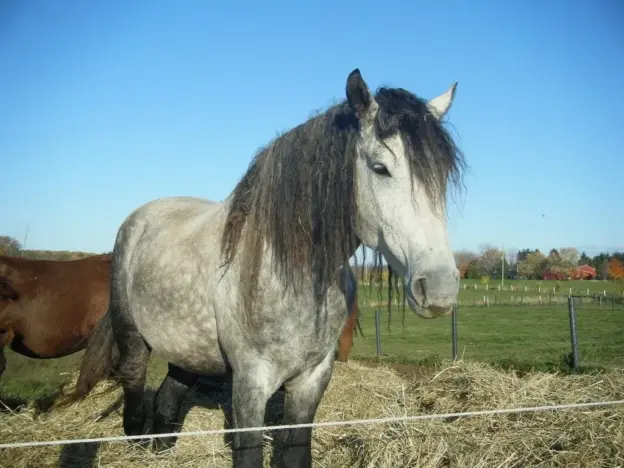Intro
American Curly horses are among the only breeds found to be hypoallergenic, like poodles. Those allergic to animal dander do not generally have a reaction to these animals.
Origins
The origin of this breed is shrouded in mystery, which has caused debate as to whether or not ‘Bashkir’ should be part of their official name. The existence of a horse with the curly gene is a mystery on North America. Their roots are likely connected to the Bashkir horse, native to the steppes of the Ural mountains (this has been recently disputed, see below). However they were discovered in America early in the 19th century.
The American Bashkir Curly Horse Registry (ABCR) was founded in 1971 to preserve the unique characteristics of the breed. Their main issue was inbreeding, as they had very few animals to work with. To solve this they turned to other breeds, namely Arabian, Morgan, Appaloosa and Missouri Fox Trotter based on similar physical characteristics. To register animals must have a specific genetic background.
There is also a International Curly Horse Organisation (ICHO) in Ohio, which has more lenient rules for registering animals.
Curly Q
When minimally expressed, curls may only appear in the ears, on fetlocks as well as in the mane and tail. When maximally expressed, the horse displays curls all over, dreadlocks in its mane and curled eyelashes. Mane and tail can completely shed out in the summer, only to re-grow again with their winter coat.
These animals are notable as their flight response is much dimmer than most breeds, even facing danger they will remain calm and wait for help. This factor alone makes them useful for riding therapy, or for riders with less dexterity.
Genetic Study
In 2017 an interesting study was done on the Genetic Diversity and Population Structure of Curly Horses, as they are incredibly rare worldwide. The original theory of these animals being related to the Bashkir breed is likely incorrect, in fact the Bashkir animals that show curly coats often came from crosses with Lokai horses from today’s Tajikistan. It believed that the Lokai could be the initial source of these genetics.
Over the years there have been mention of horses with curly coats in various European literature. The first mention was a brief one in the 13th century. Much later horses called Bachmatt with similar characteristics, down to the calm demeanor were recorded again. These hardy animals were said also to be Tartar mounts, appreciated for their ability to forage and hooves so hard they didn’t need shoes.
In the end, this study does not discover their origins, but a region from which there is record of them. Mainly western Asia, where climate can be extreme and probably the reason this particular genetic mutation was able to persist. How they came to be on the North American continent is not a total mystery, as they likely came over during the Russian occupation of Alaska. Making their way down the Pacific coast to warmer climates.
Aside from the Sioux tribe documenting stealing animals with curly coats in their winter count of 1801, the first written documentation found them in the wild in Nevada. An Italian woodcutter happened across them in a herd of mustangs and brought one home. A particularly harsh winter in 1932 killed all of his horses, except for the curly, happening again on several occasions. The family began to capture, train and breed the curly animals as working horses, selling them for extra income when needed.
Features
Average height 13.3 – 16 hands
Curly hair characteristics
Body hair should be fine and soft
Comes in many variations
Those allergic to horses can enjoy the curly horse
Physique
Medium sized head, wide set eyes and curled eyelashes
Neck is medium in length and deep at the base
Back is short and deep in the girth
Heavy boned legs
Hooves are very hard and dense
Coat is fine and soft with ringlets, a soft wave or crushed velvet curls
Mane is kinky or wavy
Tail is in ringlets or wavy
Traditional Colors
All colors
Temperament
Even-tempered and strong
Use
Pleasure horses
Show horses
Ranch horses
Therapy
Helpful Links
*All links open in a new window
American Bashkir Curly Horse Registry
Curly Sporthorse International
International Curly Horse Organization
Curly Horse Pedigree Database
Curly Horse Country
More Images

